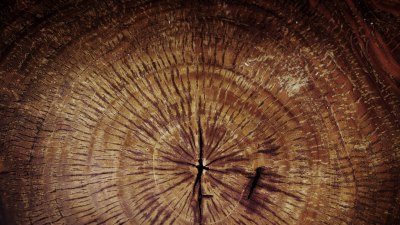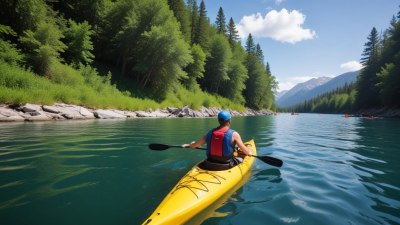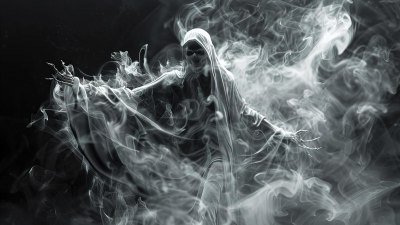Why Africa Has Both Blazing Hot Deserts and Snowy Mountains
Explore the contrasting climates of Africa, showcasing its stunning deserts and snow-capped peaks.

This image was created with the assistance of Freepik
Africa is a continent of extremes, hosting some of the hottest deserts and the tallest snowy mountains in the world. This incredible diversity of climates and ecosystems is a result of its varied topography, geographical features, and climatic zones. In this article, we will dive into the factors contributing to these contrasting environments, from the Sahara Desert to the peaks of Kilimanjaro and the Atlas Mountains.
The Geographical Diversity of Africa
Africa is the second-largest continent on Earth, stretching approximately 30.2 million square kilometers. It is home to a wide range of geographical features, including mountains, plateaus, deserts, and tropical rainforests. This variety creates multiple microclimates, which leads to extreme temperature differences.
The northern region of Africa, for instance, is dominated by the Sahara Desert, the largest hot desert in the world. Covering over 9 million square kilometers, it spans several countries, including Egypt, Sudan, and Algeria. In stark contrast, the southern part of the continent is defined by the presence of significant mountain ranges such as the Drakensberg and the Atlas Mountains, as well as Africa's highest peak, Mount Kilimanjaro.
The Role of Latitude
Africa's latitude plays a crucial role in its climate diversity. The equator runs through the center of the continent, leading to hot, humid conditions in places like the Congo Basin. As one moves away from the equator towards the north or south, temperatures and rainfall patterns change significantly. The Sahara Desert lies just north of the equator, featuring extremely high temperatures and minimal rainfall, creating an arid climate. Conversely, the southern regions experience less extreme temperatures and increased precipitation, allowing for the presence of lush vegetation and mountainous regions.
Altitude and Its Impact on Climate
Altitude significantly affects temperature and weather patterns. The higher the altitude, the cooler the temperatures tend to be. Africa's mountains, such as Mount Kilimanjaro, rise dramatically from the surrounding plains, creating a distinct climate zone even in a tropical region. The summit of Kilimanjaro, at approximately 5,895 meters, is known for its snow-capped peak, despite being situated near the equator. As one ascends the mountain, temperatures drop, leading to different vegetation zones, from tropical forests to alpine tundra.
This phenomenon illustrates how altitude can create different climate zones within a relatively small geographic area, contributing to Africa's diverse ecosystems. Similarly, the Atlas Mountains, located in North Africa, experience snowfall during the winter months due to their high elevation, creating a stark contrast to the hot lowlands surrounding them.
Ocean Currents and Weather Patterns
Another important factor influencing Africa's climate diversity is the surrounding ocean currents. The Atlantic Ocean, Indian Ocean, and Mediterranean Sea all play a role in shaping weather patterns across the continent. For instance, the cold Canary Current along the northwest coast of Africa helps to moderate temperatures in coastal areas, creating a more temperate climate that contrasts with the surrounding arid desert.
In addition, the Indian Ocean's warm waters can contribute to increased rainfall in eastern African countries, which is essential for nurturing the lush vegetation found in places like Madagascar and the East African Rift region. The convergence of these ocean currents drastically affects local climates, adding yet another layer to Africa's climate complexity.
The Effects of Climate Change
Climate change is increasingly impacting Africa’s weather patterns, causing shifts in ecosystems and climate zones. Rising temperatures are exacerbating drought conditions in already arid regions such as the Sahel, while other areas may experience increased rainfall and flooding. These changes further complicate the delicate balance between Africa’s hot deserts and snowy mountains.
The increased frequency of extreme weather events poses challenges for local agriculture, biodiversity, and water resources. As the continent faces these changes, understanding the intrinsic relationship between its geographical features and climate will be vital in adapting to the ongoing impacts of climate change.
Conservation Efforts
In light of climate change and environmental degradation, conservation efforts have become crucial in preserving Africa’s unique ecosystems. Protecting both desert environments and mountain habitats is essential for maintaining biodiversity and mitigating the effects of climate change. Initiatives focused on sustainable land use, wildlife conservation, and climate adaptation strategies are increasingly being adopted across the continent.
Community-based conservation programs are particularly effective at engaging local populations in the stewardship of their natural resources. Educating communities about the importance of preserving their unique environments can lead to feasible solutions that benefit both people and wildlife.
Africa’s geographical diversity is a testament to its extraordinary physical features that create both blazing hot deserts and snowy mountains. The interplay of latitude, altitude, ocean currents, and climate change shape the contrasting ecosystems found within this vast continent. As we continue to explore and understand these dynamic environments, it is essential to recognize the importance of conservation efforts to fully appreciate and protect the rich natural heritage of Africa.











